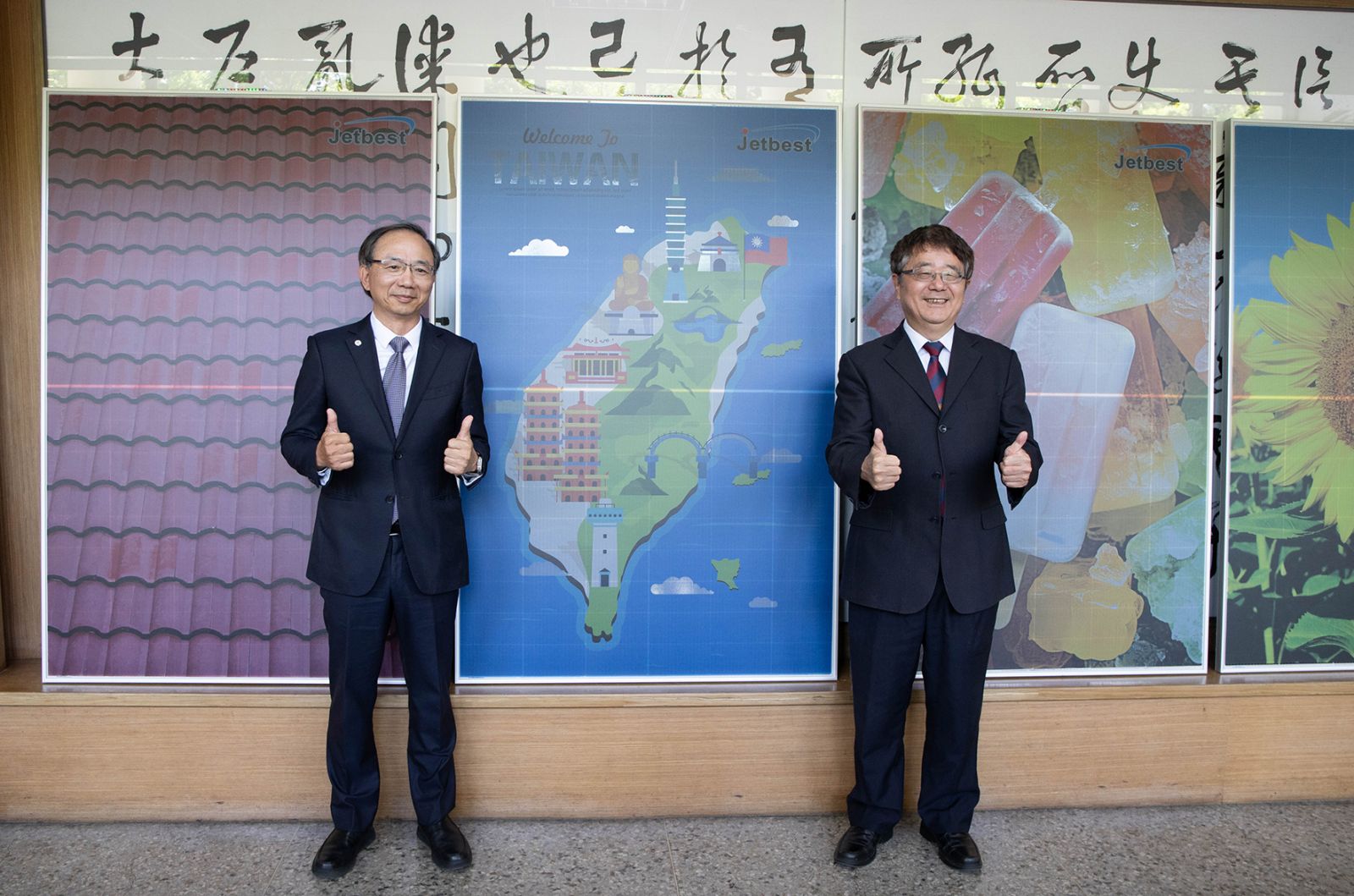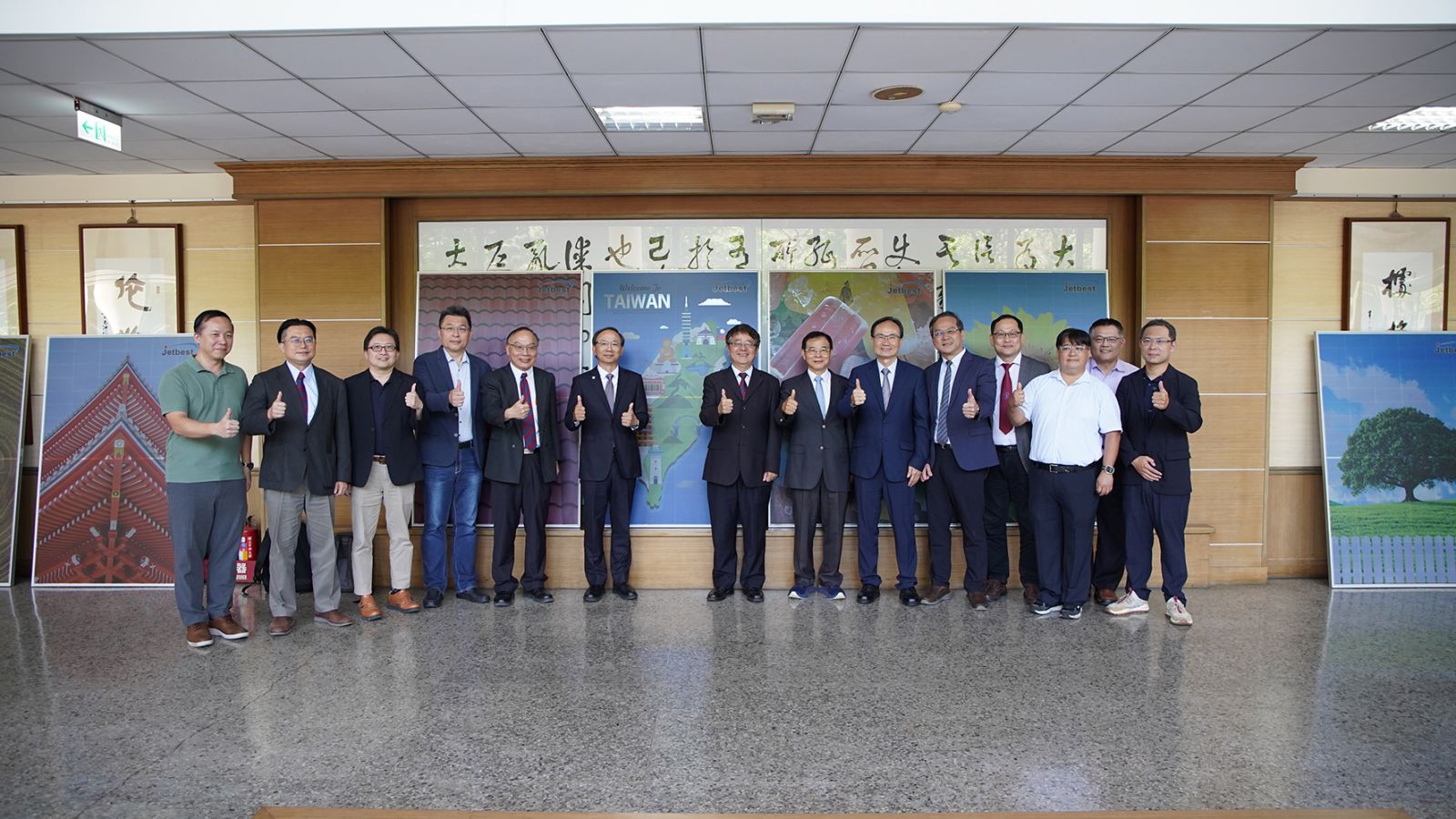2025-05-15Activity
NCHU and Jetbest Corporation Join Forces to Promote BIPV Colored Solar Technology

Jetbest Corporation has partnered with National Chung Hsing University (NCHU) to advance Building-Integrated Photovoltaics (BIPV) through an industry-academia collaboration focused on colored solar panel technologies. The initiative will use NCHU’s Nantou campus as a demonstration site, aiming to integrate renewable energy with architectural aesthetics. A memorandum of understanding (MoU) was signed on May 14 at NCHU, with NCHU President Fuh-Jyh Jan and Jetbest Chairman Yi-Ching Lu serving as official representatives.
President Fuh-Jyh Jan emphasized that NCHU is committed to achieving net-zero emissions by 2040 and has been actively promoting collaborative green energy innovation between academia, industry, and government. The university encourages listed companies to establish net-zero technology R&D centers and is transforming its Nantou branch into a Net-Zero University Town. By integrating green electricity, BIPV, and Taiwan Power Company’s smart grid technologies, the campus aims to serve as a flagship demonstration site of green building aesthetics and interdisciplinary cooperation.
Chairman Yi-Ching Lu, an alumnus of NCHU’s Department of Chemistry, described the MoU as a major step toward forward-looking technological development and real-world application. "As an alumnus of NCHU, I see this collaboration not just as a way to give back, but also as a responsibility," Lu said. "We hope this technology will breathe new life into traditional solar panels—which often have monotonous colors and even cause light pollution—by turning them into aesthetically pleasing and highly functional materials."
Jetbest’s colored solar panels are the result of two years of intensive R&D. The technology is built on proprietary light-transmitting inkjet inks and patented manufacturing processes, breaking away from the limitations of conventional black solar panels. The innovation maintains high photovoltaic efficiency while enabling rich color customization to match architectural designs. This allows solar panels to move beyond rooftops and become seamless elements of building façades, balancing energy generation with visual appeal. The technology significantly expands solar energy applications in residential, commercial, and public infrastructure.
The collaboration will cover a range of initiatives, including material development, lab testing, architectural simulations, and global market strategies. Through the integration of both parties’ resources and expertise, the project aims to accelerate commercialization and broader adoption. NCHU will also offer campus buildings as testing grounds for on-site installation and long-term performance monitoring, helping establish real-world reference models.
Professor Kuan-Jiuh Lin, Chair of the Department of Chemistry, noted that this partnership represents more than a technological advancement. “It’s a landmark for sustainable development through industry-academia collaboration,” he said. Lin also highlighted the role of NCHU’s iSNR, which can assist in carbon credit certification and help accelerate the adoption of BIPV technology. “We look forward to seeing more green buildings that combine visual beauty with environmental responsibility, injecting new energy into both cityscapes and global sustainability.”


President Fuh-Jyh Jan emphasized that NCHU is committed to achieving net-zero emissions by 2040 and has been actively promoting collaborative green energy innovation between academia, industry, and government. The university encourages listed companies to establish net-zero technology R&D centers and is transforming its Nantou branch into a Net-Zero University Town. By integrating green electricity, BIPV, and Taiwan Power Company’s smart grid technologies, the campus aims to serve as a flagship demonstration site of green building aesthetics and interdisciplinary cooperation.
Chairman Yi-Ching Lu, an alumnus of NCHU’s Department of Chemistry, described the MoU as a major step toward forward-looking technological development and real-world application. "As an alumnus of NCHU, I see this collaboration not just as a way to give back, but also as a responsibility," Lu said. "We hope this technology will breathe new life into traditional solar panels—which often have monotonous colors and even cause light pollution—by turning them into aesthetically pleasing and highly functional materials."
Jetbest’s colored solar panels are the result of two years of intensive R&D. The technology is built on proprietary light-transmitting inkjet inks and patented manufacturing processes, breaking away from the limitations of conventional black solar panels. The innovation maintains high photovoltaic efficiency while enabling rich color customization to match architectural designs. This allows solar panels to move beyond rooftops and become seamless elements of building façades, balancing energy generation with visual appeal. The technology significantly expands solar energy applications in residential, commercial, and public infrastructure.
The collaboration will cover a range of initiatives, including material development, lab testing, architectural simulations, and global market strategies. Through the integration of both parties’ resources and expertise, the project aims to accelerate commercialization and broader adoption. NCHU will also offer campus buildings as testing grounds for on-site installation and long-term performance monitoring, helping establish real-world reference models.
Professor Kuan-Jiuh Lin, Chair of the Department of Chemistry, noted that this partnership represents more than a technological advancement. “It’s a landmark for sustainable development through industry-academia collaboration,” he said. Lin also highlighted the role of NCHU’s iSNR, which can assist in carbon credit certification and help accelerate the adoption of BIPV technology. “We look forward to seeing more green buildings that combine visual beauty with environmental responsibility, injecting new energy into both cityscapes and global sustainability.”







